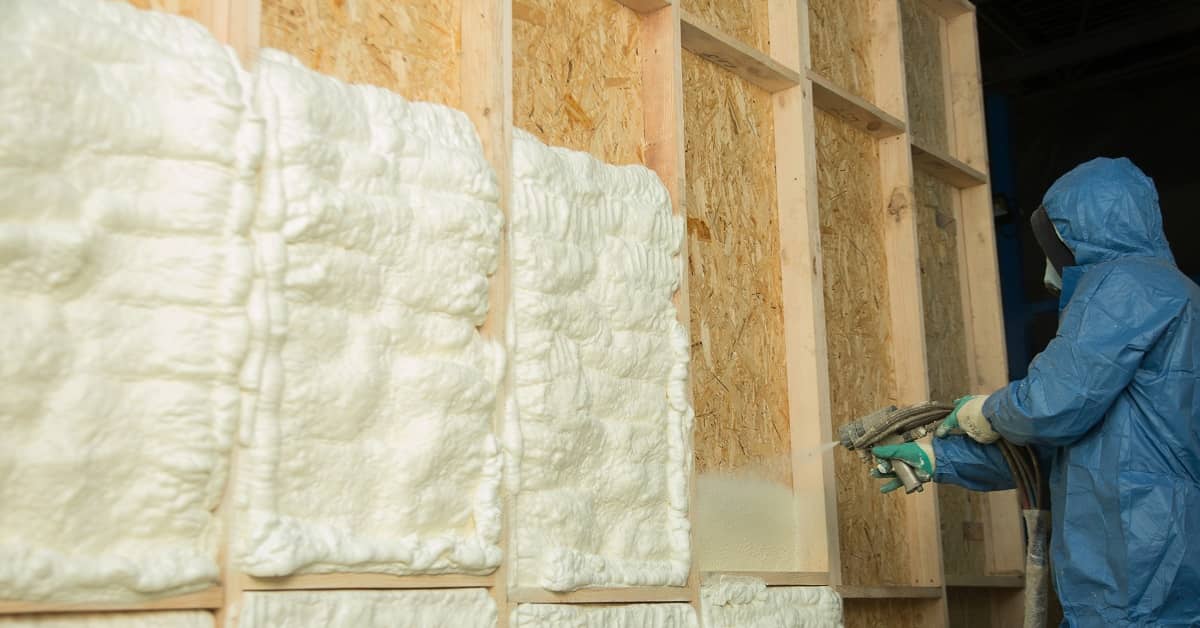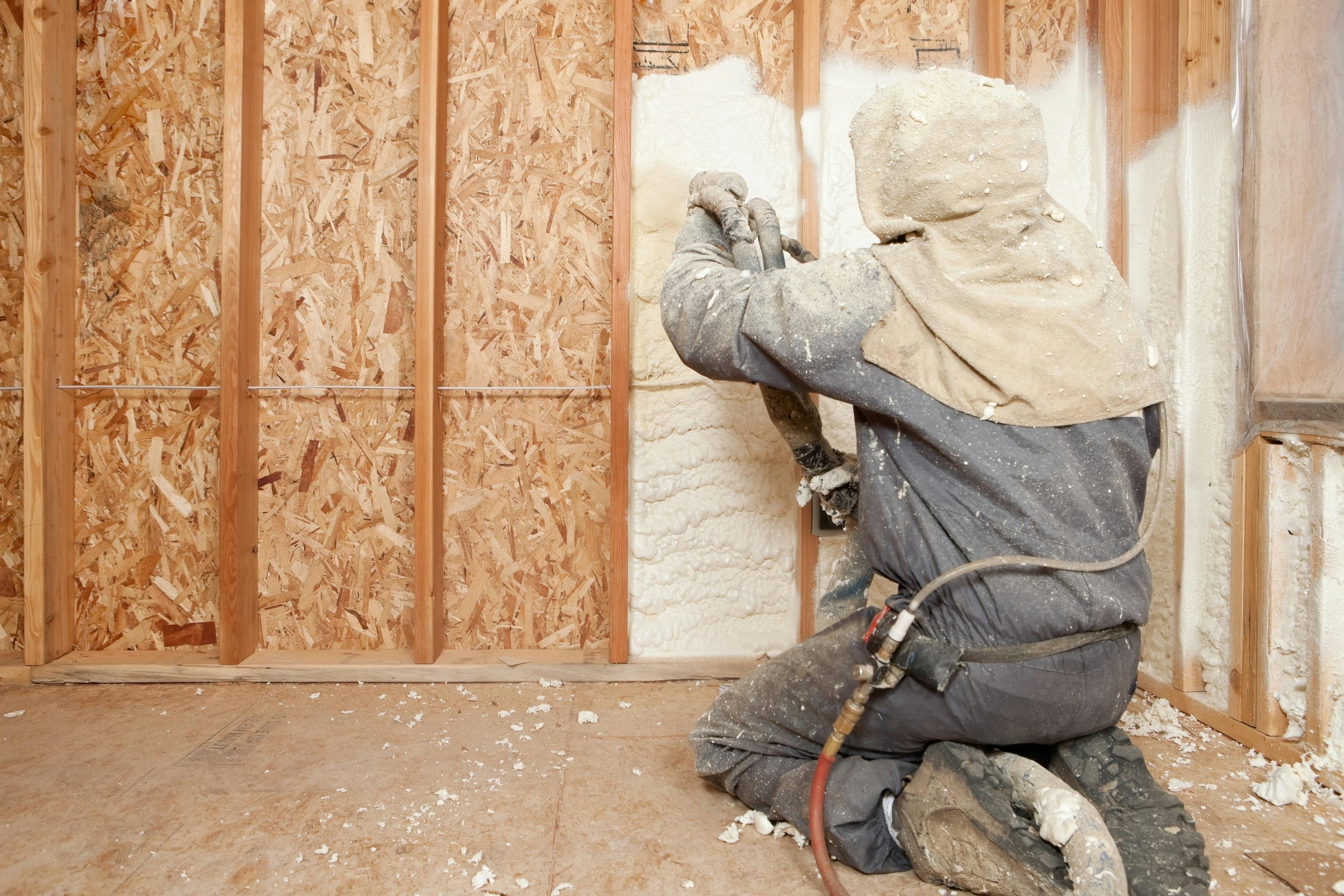Wall insulation plays a major role in how much energy a home consumes throughout the year. Whether during the heat of summer or the chill of winter, well-insulated walls reduce the need for mechanical heating and cooling systems to work harder than necessary.
This article explains how wall insulation affects energy savings across all seasons. It covers how different insulation materials impact performance, which installation methods are most effective, and when upgrades make the biggest difference for homeowners looking to cut utility costs and improve indoor comfort.
How Wall Insulation Affects Year-Round Energy Performance
Walls are one of the main paths for heat transfer in a building envelope. Proper insulation interrupts this exchange and helps stabilize indoor temperatures.
Controlling Heat Transfer
Heat naturally moves from warm areas to cooler ones. In winter, that means warmth escapes outward through walls. In summer, heat flows in from outside. Insulation slows this process. Thermal resistance of walls, measured by R-value, determines how well the insulation resists heat flow. Higher R-values reduce seasonal energy use, and when combined with air sealing, the impact is even stronger.
Reducing HVAC System Demand
Without proper insulation, heating and cooling systems must compensate for temperature fluctuations caused by outdoor conditions. This leads to longer run times, higher utility bills, and faster wear on equipment. In homes with poor or no wall insulation, it's common to experience uneven temperatures between rooms or floors. Upgrading insulation reduces this demand, improves comfort, and cuts long-term operational costs.
Material Choice Matters
Not all insulation materials perform equally across climates or wall types. Choosing the right one affects both short-term results and long-term durability.
Batt and Roll Insulation (Fiberglass or Mineral Wool)
Batt insulation is one of the most widely used options for wood-frame walls. It fits between studs and joists and is available in pre-cut sizes. This method works best when paired with proper air sealing to avoid thermal gaps. Compression during installation can reduce its effectiveness, so careful fitting is necessary. Typical R-values range from R-13 to R-21.
Blown-In or Dense Pack Cellulose
Blown-in cellulose works well in retrofit situations where opening up wall cavities is impractical. The material fills gaps more evenly than batt insulation, helping to reduce air leakage. While it offers moderate R-values and is environmentally friendly, it needs protection from moisture to prevent settling or mold growth.
Spray Foam Insulation (Closed-Cell or Open-Cell)
Spray foam expands to fill cavities and cracks, providing both insulation and air sealing. Closed-cell types deliver higher R-values per inch (up to R-6.5) and resist moisture, while open-cell is more flexible and suitable for sound control. Spray foam is ideal for performance but comes with a higher upfront cost.
Rigid Foam Panels
Rigid foam boards are often installed on the exterior side of walls during new construction or siding replacement. They provide a continuous insulation layer that helps eliminate thermal bridging—where heat passes through wood framing members. When installed properly with sealed joints, this method significantly improves energy performance.
Seasonal Impact of Wall Insulation
Wall insulation doesn't just work in winter. It supports indoor comfort and energy efficiency through every season.
Winter Benefits: Reducing Heat Loss
In colder climates, heating costs can account for over 40% of a home's energy use. Walls that are under-insulated or have deteriorated materials let heat escape, leading to discomfort and high bills. Good insulation keeps warm air indoors, reduces drafts, and limits condensation inside the wall structure.
Summer Benefits: Blocking Heat Gain
When outdoor temperatures rise, walls can act as heat conduits. Proper insulation limits the transfer of that heat into the living space. This reduces the load on air conditioning systems and contributes to better humidity control when paired with an effective air barrier.
Year-Round Performance Gains
Homes with quality insulation enjoy more stable temperatures, lower utility costs, and longer HVAC system lifespan. Depending on factors like climate zone, building materials, and insulation type, wall insulation can reduce total energy use by 10% to 25% per year.
Summary Table: Seasonal Role of Wall Insulation
When to Upgrade or Add Wall Insulation
While newer homes often meet insulation code requirements, many older homes fall short. Recognizing the signs helps you decide when upgrades make sense.
Signs of Insufficient Wall Insulation
Inconsistent indoor temperatures, cold or hot wall surfaces, and high utility bills often point to weak or missing insulation. Drafts and condensation around windows and walls are other warning signs. Homes built before modern energy codes are the most likely candidates for upgrades.
Energy Audit Results
Professional energy audits offer valuable insights using tools like blower doors and thermal imaging. These tests help identify heat loss through walls, pinpoint air leaks, and recommend the most effective solutions. Audit reports also support rebate applications or efficiency upgrade incentives.
Renovation Opportunities
Insulation upgrades are easier and more cost-effective during major renovations. If siding is being replaced or walls are being opened, it's the perfect time to add or improve insulation. Exterior applications allow for continuous insulation and minimize disruption to interior finishes.

Common Questions
Is wall insulation worth the investment for older homes?
Yes. Older homes often lack insulation or have degraded materials. Upgrading wall insulation can reduce heating and cooling bills significantly and improve comfort year-round.
Can insulation stop drafts in my home?
Insulation alone doesn’t stop drafts, but when combined with proper air sealing, it eliminates pathways for air leaks and improves energy performance.
What’s the difference between R-13 and R-21 insulation?
R-value measures resistance to heat flow. R-21 provides better thermal resistance than R-13 and is more appropriate for colder climates or where space allows for thicker insulation.
How does continuous insulation work?
Continuous insulation is applied across all structural members, usually on the exterior of a building. It reduces thermal bridging by covering framing that would otherwise conduct heat.
Conclusion
Wall insulation plays a central role in energy savings by creating a more efficient thermal envelope. From controlling heat loss in winter to reducing cooling loads in summer, quality insulation leads to both comfort and cost benefits.
Upgrading insulation or ensuring proper installation during new construction helps reduce wasted energy, stabilize indoor environments, and support longer HVAC system life. Partnering with professional Spray Foam Insulation services ensures that wall insulation isn’t just a seasonal fix—it’s a long-term investment in year-round energy performance.
FAQs
How much energy can proper wall insulation save per year? Well-installed wall insulation can reduce annual energy consumption by 10% to 25%, depending on climate, existing wall conditions, and material used.
What is thermal bridging, and how does insulation help prevent it? Thermal bridging occurs when heat flows through materials with low resistance, like studs. Continuous insulation helps prevent this by covering structural elements that otherwise conduct heat.
Does insulation help with soundproofing too? Yes. While its primary function is thermal, insulation—especially mineral wool or dense cellulose—also reduces airborne sound transmission between rooms and exterior walls.
Should interior or exterior walls be insulated? Both can be insulated, but exterior wall insulation has the most impact on energy savings. Interior wall insulation is often used for sound control or in multi-zone climate strategies.
Can I install wall insulation myself? Batt or blown-in insulation can be DIY projects if safety guidelines and local codes are followed. Spray foam and exterior rigid insulation typically require professional installation for proper results.
Reviewer: With nearly a decade in the spray foam insulation field, William Harris reviewed this post and provided guidance that reflects both technical understanding and real-world marketing experience.






Comments